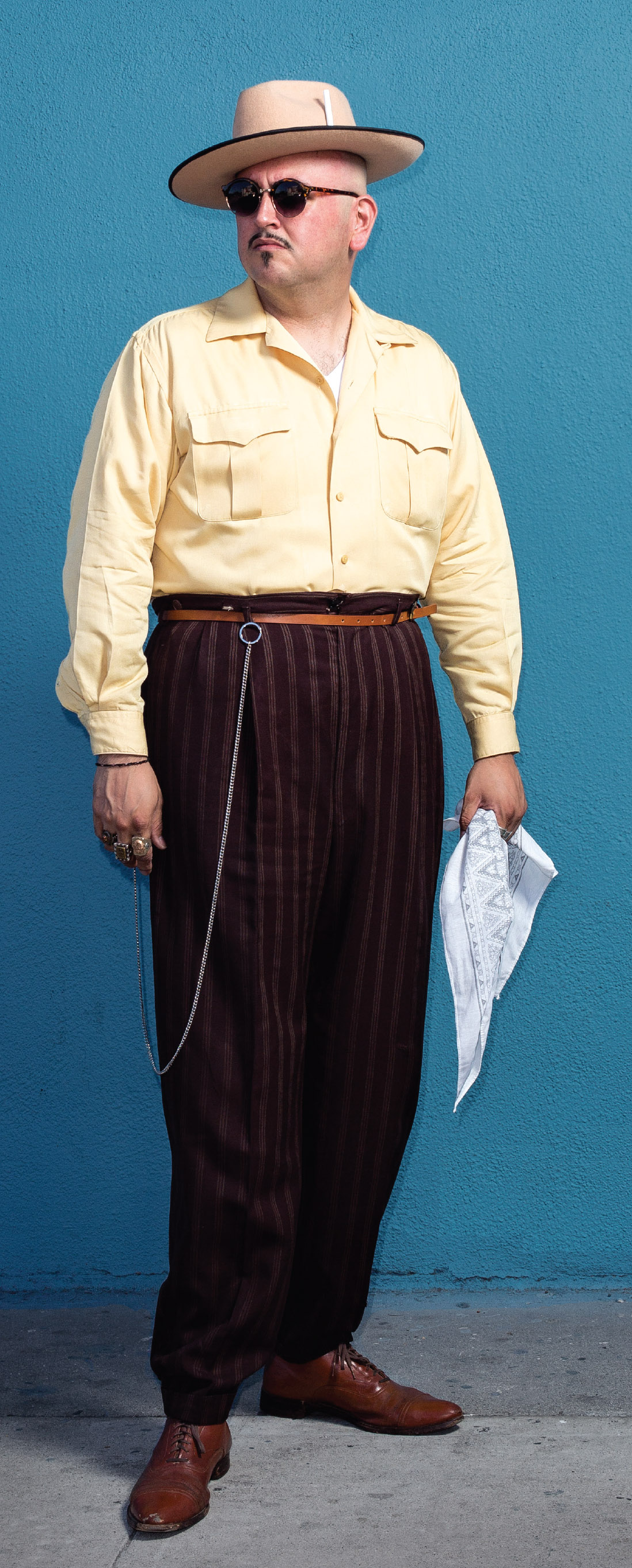The zoot suit is a loaded symbol. Donned by Mexican-American pachucos in the 1930s and ’40s, the outfit was a mark of masculinity to barrio youth. But many saw it as anti-American in a time of war, and responded with discrimination against Latinos that peaked with the Zoot Suit Riots in 1943. Today, small groups around the American Southwest are bringing back the look of their forefathers—and at the same time inventing something new.

- The first time I found these outfits from the 1940s and created a look for myself, I felt unstoppable. I felt empowered. I felt like I could do anything. I got chills, and I got teary-eyed, because I saw myself in a way I never thought I could see myself. As an adult, as a man, I looked in the mirror and I saw something beautiful. That’s why I continued to wear it.
- A lot of us grew up in the rockabilly subculture, that kind of wild, rebellious sound of the 1950s. But as we got older, we started to do research and realized that even though that culture seemed like something that we really connected to, what we really needed to connect with was our own historical experience as Latino Americans, as Mexican Americans.
- Two years ago [the 70th anniversary of the Zoot Suit Riots], I thought it was a perfect time to get everybody we know who has an affinity and respect for the culture to meet in downtown Los Angeles at Olvera Plaza, where zoot suiters used to hang out, across from Union Station. We took the train to get there, and there were all these people wearing zoot suits, and girls with the big pompadour hair. At that moment, I remember getting this chill. I was like, “Wow, this is powerful. It’s engaging people to think about something.” We just took over this space simply by being present and walking through it.
- There is a misperception of zoot suit culture. The media at the time created this demonization of the Mexican American. If you were wearing a zoot suit, there was something wrong with you. You weren’t being patriotic. You weren’t being part of the solution, you were being part of the problem. The gang aspect of the culture is actually the minority. Most pachucos and zoot suiters were not part of gangs. They were just kids who wanted to go swing dancing, to look cool, to feel good.
- There have always been pachucos. Every decade, every generation, they’ve never gone away. You could say we are new pachucos, but I like to say evolved pachucos, in the sense that we’ve grown to understand something deeper about ourselves. Now we have a consciousness around recognizing that we exist, instead of just being in that place and time and struggling through things. We have a place now. We understand that we’re here.
—John Carlos De Luna, 35, artist and community organizer (as told to Paul Bisceglio)

Submit your response to this story to letters@psmag.com. If you would like us to consider your letter for publication, please include your name, city, and state. Letters may be edited for length and clarity, and may be published in any medium.
For more from Pacific Standard, and to support our work, sign up for our free email newsletter and subscribe to our print magazine, where this piece originally appeared. Digital editions are available in the App Store and on Zinio and other platforms.




